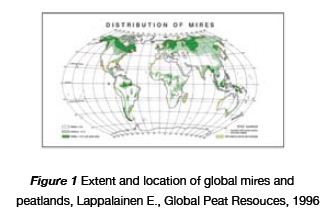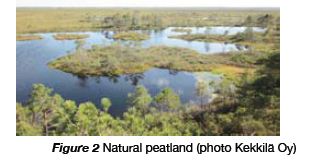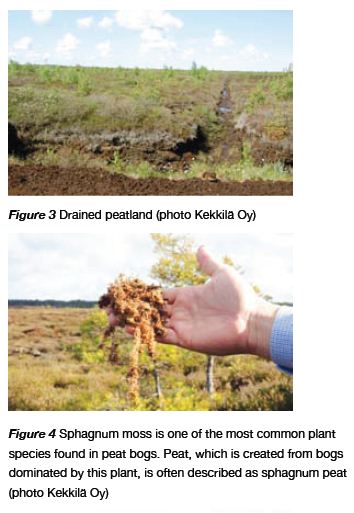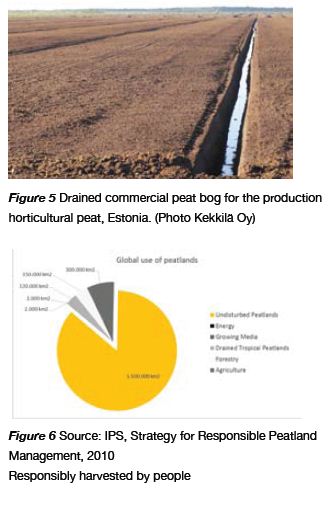Peat is the most common material used in plant growing media, but have you ever thought about what peat really is?
Organic Growing Medium Made By Nature Peat is a mixture of decomposed plant material that has accumulated in water-saturated bogs in the absence of oxygen. Peat formation is a continuous process, with bogs typically accumulating peat at a rate of 1-2mm every year. The rate of accumulating plant material is greatest in areas where the ambient temperature is high enough for plant growth but where the level of rainfall, specific topography of the landscape and low transpiration rates encourages waterlogging, limiting aerobic microbial activity which would normally break down the plant material.Such conditions are found more frequently in the northern hemisphere.
Peat is a mixture of decomposed plant material that has accumulated in water-saturated bogs in the absence of oxygen. Peat formation is a continuous process, with bogs typically accumulating peat at a rate of 1-2mm every year. The rate of accumulating plant material is greatest in areas where the ambient temperature is high enough for plant growth but where the level of rainfall, specific topography of the landscape and low transpiration rates encourages waterlogging, limiting aerobic microbial activity which would normally break down the plant material.Such conditions are found more frequently in the northern hemisphere.
Uses of Peatlands and Peat
Peatlands are used and managed for many different purposes. Undrained peatlands are natural habitats for a wide range of endemic species of fauna and flora, and are a known carbon sink, locking up carbon released as CO2 into the atmosphere. As such, many bogs, particularly in Europe, are protected for their wildlife value, as well as their contribution to limiting climate change,with specific protection under national and European laws.
Historically,large areas of peatlands have been drained, and used for agriculture and forestry,as well as for the extraction of the peat itself. In the country of origin, extracted peat can be used as a local source of energy (biomass as a fuel for power plants), and for use in horticulture as a mayor constituent of growing media.
Peat is only harvested from carefully selected sites where specific extraction permits have been obtained from the local government of that area. These areas are selected, in part, because of their limited conservation value. Where areas are identified as having a conservation value, these are protected and not used for the extraction of peat. For example, in the European Union, peat extracted for fuel or horticulture is taken from just 0.4 % of all peatlands.
Out of all industries that have an impact on peatlands, including forestry and agriculture, it is the peat extraction companies who are regulated the most. For example, prior to starting to extract peat, it can take several years before all permissions are granted. The entire process from applying for the permit to actually extracting peat for the first time can take up to 10 years. This may include, as well as assessing the site at the beginning for its conservation value, having specific plans, and money set aside, to ensure that the bogs can be regenerated when the peat extraction ends.

After obtaining the necessary permits, the first thing that is done is to create a series of ditches across the peatland to drain the water from the bog. This encourages the surface layers of peat to dry, and enable its extraction.Before drainage, a natural peatland has an extremely soft surface which prevents any equipment or machines to be used on the surface. It can take up to three years until extraction can start after the first ditches have been excavated.
Once the peat is ready to be harvested, this then takes place during only the summer months (roughly from May to September) when the weather is sunny and windy enough to help dry the surface layers of peat.
Peat for use in horticulture is extracted using two different methods. The first method produces the so called “milled peat”, and the second method produces “sod peat”.
Milled peat
During the harvest,1 - 3 cm thin layers of peat is milled or harrowed loose from the surface of the drained peat bog. After several days of drying under the sun, and when the peat is sufficiently dry (approximately 40-45% moisture content), it is collected directly from the surface of the peat bog by vacuum harvesters or, collected mechanically from ridges previously built.
Stockpiles of peat are formed at the peat bog and, by the autumn and winter, are covered with plastic foil. Finally, when required at the factory, the peat is transported to the production facilities, where it can be further processed.
Sod peat
During sod peat harvesting, big blocks of peat are dug out directly from the bog with special equipment up to a depth of approximately one metre. The sods of peat are left on the surface of the bog to drain excess water. When blocks start to dry in the springtime, they are piled manually in small piles to dry further, until they are dry enough to be processed in the substrate producing unit.
During the preparation and production of peat, the best available technology (BAT) is used in order to protect environment and ensure sustainable production.
When peat extraction finishes on a site, the area will be used for other purposes, which has usually been pre-determined at the point of receiving the extraction permit. The three main options for afteruse of a peatland are forestry, agriculture or re-wetting to create a new bog. Where bog regeneration is specified by the licencing authority, drains are blocked, and native plants are raised and planted to encourage the regeneration of a natural bog ecosystem.


